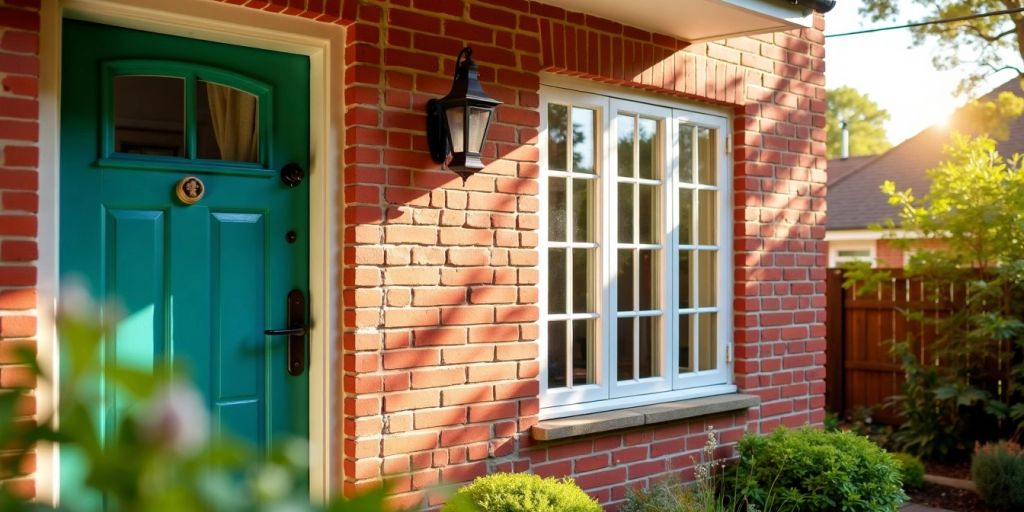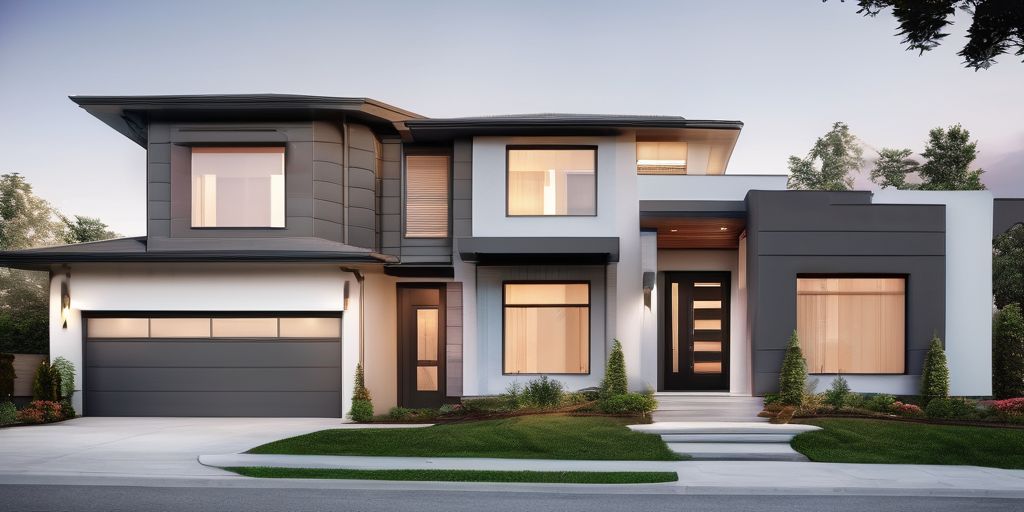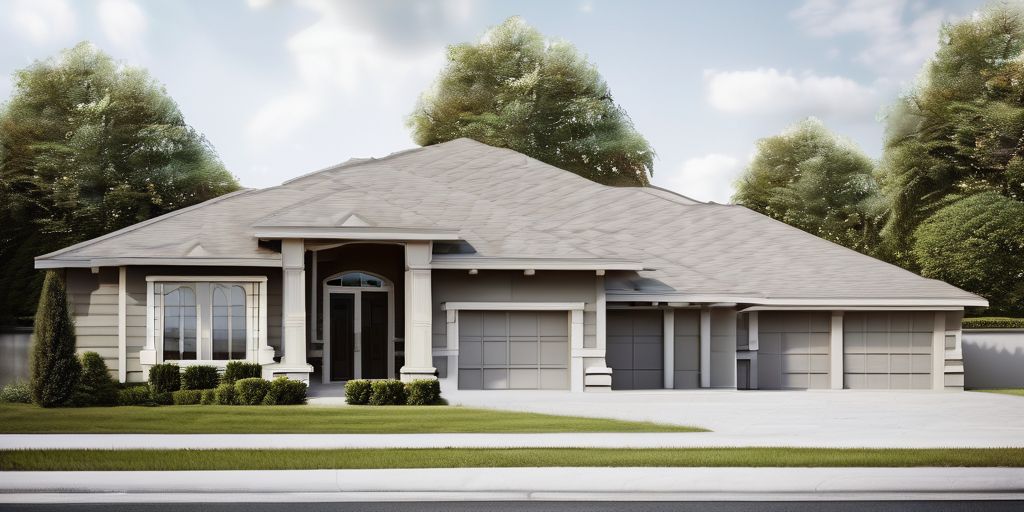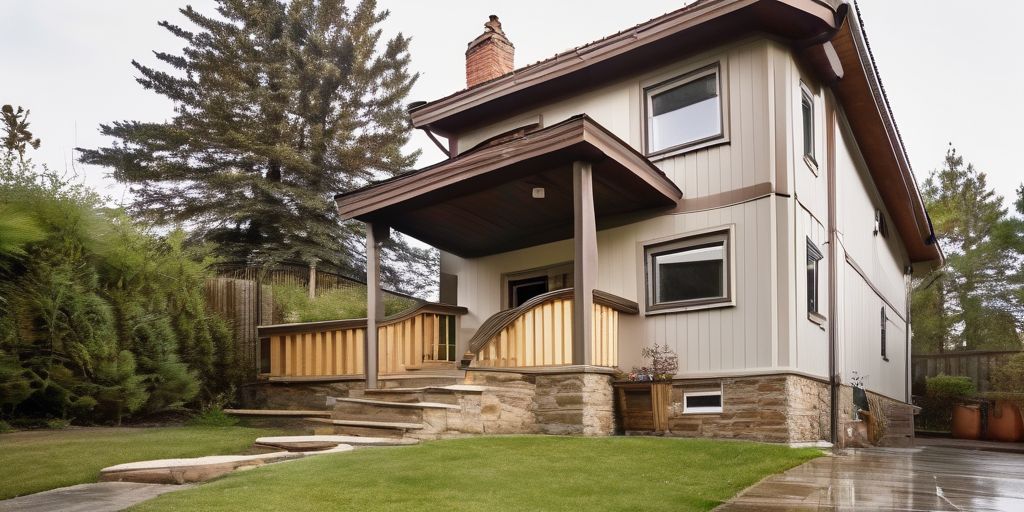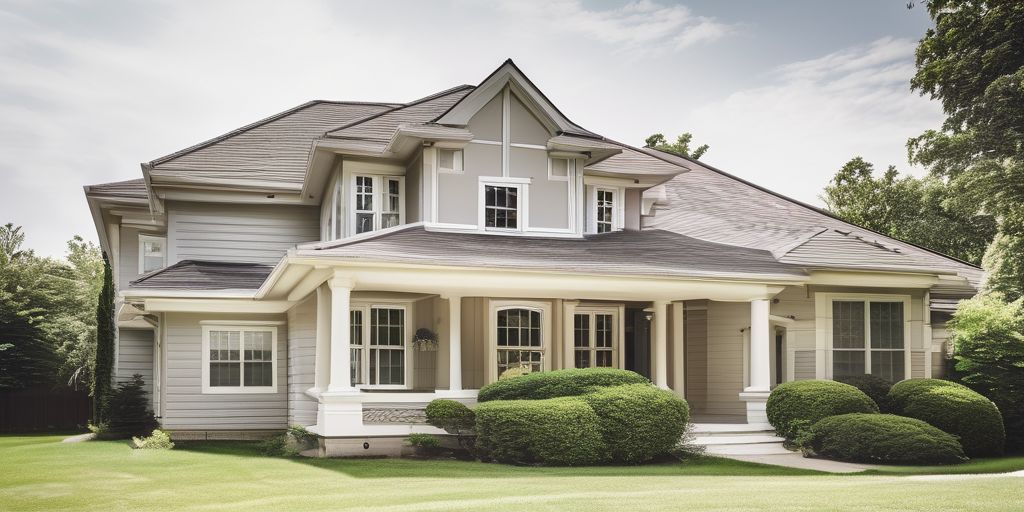Painting brick surfaces in Mississauga can be challenging due to the unique characteristics of brick and the local weather conditions. However, with the right preparation and techniques, you can transform your brick surfaces and enhance your home’s curb appeal. This article will help you understand the challenges and provide practical solutions for painting brick surfaces in Mississauga.
Key Takeaways
- Proper surface preparation, including cleaning and priming, is crucial for successful brick painting.
- Choosing the right type of paint, such as sun-resistant options, ensures long-lasting results.
- Weather conditions in Mississauga can affect painting projects, so plan accordingly.
- Using the right tools and techniques, like sprayers and layering, can improve the final outcome.
- Regular maintenance and protective coatings help maintain the durability and appearance of painted brick.
Understanding the Unique Characteristics of Brick Surfaces
Porosity and Texture
Brick surfaces are known for their porosity and rough texture. These features can make painting a bit tricky. Here are some key points to consider:
- Porosity: Bricks can absorb moisture, which can affect paint adhesion.
- Texture: The rough surface can lead to uneven paint coverage if not properly prepared.
- Efflorescence: New bricks may have a powdery surface that needs to be cleaned off before painting.
Impact of Weather on Brick
Weather conditions in Mississauga can significantly impact brick surfaces. Factors to keep in mind include:
- Temperature Swings: Bricks expand and contract with temperature changes, which can cause paint to crack.
- Humidity: High moisture levels can lead to mold and mildew growth on brick surfaces.
- Freeze-Thaw Cycles: Water can seep into bricks and freeze, causing cracks and damage.
Common Issues with Brick Surfaces
Several common issues can arise when dealing with brick surfaces:
- Moisture Retention: Bricks can hold moisture, leading to paint peeling and blistering.
- Cracks and Damage: Over time, bricks can develop cracks that need to be repaired before painting.
- Previous Coatings: Existing paint or sealants can affect how well new paint adheres to the surface.
Understanding these unique characteristics is essential for overcoming brick surface challenges in Mississauga’s painting projects.
Effective Surface Preparation Techniques
Cleaning and Removing Contaminants
Proper cleaning is the first step in preparing brick surfaces for painting. Removing all contaminants such as dirt, grime, and efflorescence is crucial. This can be done through:
- Pressure washing
- Using specialized cleaning solutions
- Hand scrubbing with appropriate cleaners
Ensuring the surface is dry before moving to the next step is essential, especially in areas with variable weather like Mississauga.
Repairing Cracks and Damage
Before painting, it’s important to repair any cracks or damage on the brick surface. This involves:
- Filling cracks with suitable fillers
- Replacing damaged bricks
- Ensuring a smooth surface for painting
Addressing these issues helps in achieving a uniform finish and enhances the durability of the paint.
Applying the Right Primer
Priming the brick surface is a critical step. A suitable masonry primer helps in sealing the porous surface, providing a better base for the paint. Key points to consider include:
- Choosing a primer designed for masonry or brick
- Allowing the primer to dry completely before painting
- Ensuring temperatures are within the recommended range for the primer and paint
In Mississauga, planning your painting project around the weather forecast can help avoid complications from humidity or temperature swings.
Choosing the Best Paint for Brick Surfaces
Types of Paint Suitable for Brick
Selecting the right paint for brick surfaces is crucial for both appearance and durability. Here are some options:
- Acrylic latex paints: These are often recommended for their durability and ability to expand and contract with the brick’s surface.
- Elastomeric paints: These provide a waterproof coating but should be used cautiously as they can trap moisture.
- Mineral-based paints: For a natural look, these adhere well to masonry surfaces.
When painting brick, it’s important to avoid oil-based paints, as they can seal moisture in and lead to deterioration of the brick over time.
Benefits of Sun-Resistant Paint
Using sun-resistant paint can offer several advantages, especially in areas with high sun exposure like Mississauga:
- Prevents fading: Sun-resistant paints help maintain the color over time.
- Reduces heat absorption: These paints can keep the surface cooler, which is beneficial during hot summers.
- Enhances durability: They are formulated to withstand UV rays, extending the life of the paint job.
Factors to Consider When Selecting Paint
When choosing paint for brick surfaces, consider the following factors:
- Surface condition: Ensure the brick is clean and free of contaminants.
- Weather conditions: Plan your project around the forecast to avoid issues with humidity and temperature swings.
- Paint type: Choose a paint that is breathable to allow moisture to escape, preventing peeling or blistering.
- Application method: Decide whether you will use brushes, rollers, or sprayers for the best coverage.
By taking these factors into account, you can improve the likelihood of a lasting and aesthetically pleasing finish on your brick painting project.
Proper Application Methods for Brick Surfaces
When painting brick surfaces, the method you choose can greatly affect the final look. Here are some key techniques to consider:
Using Brushes vs. Rollers
- Brushes are great for small areas and detailed work. They allow for precision and can get into the nooks and crannies of the brick.
- Rollers are ideal for larger, flat areas. They provide even coverage and can speed up the process.
- For the best results, use a combination of both. Start with a brush for the edges and detailed spots, then switch to a roller for the larger sections.
Advantages of Paint Sprayers
- Even Coverage: Paint sprayers can provide a more uniform finish, especially on textured surfaces like brick.
- Speed: Sprayers can cover large areas quickly, making them ideal for big projects.
- Penetration: They can penetrate the porous texture of brick better than brushes or rollers, ensuring a more durable finish.
Importance of Layering and Drying Time
- Multiple Thin Layers: Apply paint in multiple thin layers rather than one thick coat. This helps with better drying and adhesion, reducing the risk of peeling and blistering.
- Drying Time: Allow adequate drying time between coats. Rushing this process can lead to subpar results and future complications.
Remember, patience and attention to detail during the application process will pay off in the appearance and longevity of the paint job.
In Mississauga, where the weather can be unpredictable, it’s important to plan your painting project around the forecast. For instance, avoid painting on days when the iconic Port Credit Lighthouse might be obscured by rain or fog, as high humidity can affect paint drying and adherence.
Dealing with Mississauga’s Weather Conditions
Timing Your Painting Project
When painting brick surfaces in Mississauga, timing is crucial. The best time for painting is typically during the late spring, summer, and early fall months. These seasons offer more stable weather conditions, reducing the risk of sudden changes that can affect the paint job.
- Monitor the weather forecast closely to choose the right time for painting.
- Avoid days with high humidity or chances of rain.
- Paint during the mildest part of the day, usually late morning or early afternoon, to avoid dew or frost.
- Allow ample drying time before the temperature drops in the evening or before any expected precipitation.
It’s essential to respect the natural drying process of paint to prevent issues such as cracking or peeling.
Handling Humidity and Temperature Swings
Mississauga’s weather can be quite unpredictable. Sudden changes in temperature, high humidity, and unexpected rain can all affect painting projects. Here are some tips to handle these challenges:
- Use paints that are specifically designed to withstand high humidity and temperature fluctuations.
- Ensure the brick surface is completely dry before starting the painting process.
- Consider using dehumidifiers or fans to control the moisture levels in the air.
- Be prepared to pause the project if the weather conditions become unfavorable.
Weatherproofing Techniques
To ensure the longevity of your painted brick surfaces, weatherproofing is essential. Here are some effective techniques:
- Apply a high-quality primer before painting to create a strong base.
- Use weather-resistant paints that can withstand harsh conditions.
- Seal the painted surface with a protective coating to prevent moisture penetration.
- Regularly inspect and maintain the painted surfaces to address any signs of wear and tear promptly.
By following these tips, you can successfully navigate the challenges posed by Mississauga’s weather and achieve a durable, long-lasting paint job on your brick surfaces.
Ensuring Long-Term Durability of Painted Brick
Ensuring the longevity of a painted brick surface involves more than just the initial application. To maintain the aesthetic appeal and structural integrity over time, consider the following points:
Regular Maintenance Tips
- Regular maintenance is key to longevity. This includes periodic cleaning to remove dirt and pollutants that can degrade the paint.
- Application of sealers can protect the paint from moisture penetration, a common cause of paint failure on brick surfaces.
- Use of high-durability coatings can significantly extend the life of the paint job, resisting wear and tear from environmental factors.
It’s important to address any signs of damage or wear promptly to prevent further deterioration.
Protective Sealers and Coatings
- Applying a protective sealer can help shield the paint from moisture and other elements.
- Consider using coatings that are engineered for robust durability, ensuring long-term protection and quality.
- Reapply sealers as needed, especially after harsh weather conditions.
Addressing Signs of Wear and Tear
- Inspect the painted brick surface regularly for any signs of wear and tear, such as cracks or peeling paint.
- Promptly repair any damage to prevent further deterioration.
- Touch up the paint as needed to maintain a fresh and vibrant appearance.
By taking these factors into account, you can improve the likelihood of a lasting and aesthetically pleasing finish on your brick painting project in Mississauga.
Creative Brick Painting Ideas for Mississauga Homes
Accent Walls and Features
Creating accent walls and features with brick painting can add a unique touch to your home. Consider painting a single wall in a bold color to make it stand out. This technique works well in living rooms, kitchens, and even outdoor spaces. Bold colors can create a focal point and enhance the overall aesthetic of your home.
Color Schemes that Stand Out
Choosing the right color scheme is crucial for making your brick surfaces pop. Here are some ideas:
- Monochromatic schemes: Use different shades of the same color for a subtle yet sophisticated look.
- Contrasting colors: Pairing light and dark colors can create a striking effect.
- Earth tones: These colors blend well with natural brick and can give your home a warm, inviting feel.
Incorporating Architectural Styles
Mississauga homes come in various architectural styles, and your brick painting should complement the design. For example:
- Modern homes: Opt for sleek, neutral colors like gray or white.
- Traditional homes: Warm colors like red or brown can enhance the classic look.
- Historic homes: Consider using colors that match the original palette to preserve the home’s character.
When planning your brick painting project, consider visiting local landmarks like the Mississauga Civic Center for inspiration. The architecture and color schemes can provide valuable ideas for your own home.
By incorporating these creative ideas, you can transform your brick surfaces and make your Mississauga home truly stand out.
Transform your Mississauga home with creative brick painting ideas! Our expert team can give your house a fresh, new look without the high cost of replacements. Visit our website to explore more ideas and book a free estimate today.
Conclusion
In summary, tackling the challenges of painting brick surfaces in Mississauga can be quite rewarding with the right approach. By focusing on proper preparation, selecting the best materials, and paying attention to weather conditions, you can achieve a stunning and durable finish. Remember, every brick surface has its own quirks, but with patience and the right techniques, your project can stand out beautifully. Whether you’re a homeowner or a professional painter, understanding these key steps will help you transform any brick surface into a masterpiece. Happy painting!
Frequently Asked Questions
What kind of paint works best on brick surfaces?
Acrylic latex paint and elastomeric paint are great choices for painting brick surfaces.
Is priming necessary before painting brick?
Yes, priming the brick surface helps the paint stick better and last longer.
How do I get a brick surface ready for painting?
Clean the brick well, fix any cracks or damage, and put on a good primer.
Can I paint brick when it’s cold or rainy outside?
It’s better to avoid painting in cold or wet weather to make sure the paint dries and sticks properly.
What’s the best way to put paint on brick?
You can use rollers, brushes, or sprayers depending on the size of the area and the project needs.
How can I make my painted brick last longer?
Regular cleaning, using sealers, and fixing any damage right away can help your painted brick look good for a long time.

